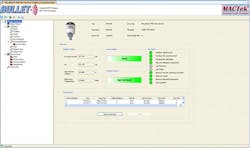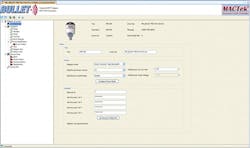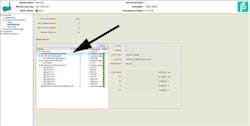Using a DTM to Simplify Joining a BULLET WirelessHART Adapter to a Wireless Network
The BULLET is the only complete family of WirelessHART adapters designed to meet all application and certification needs including general purpose and intrinsically safe. It is also the only explosion/flame-proof WirelessHART adapter available today! It also allows up to 8 measurement devices to be connected, making wireless very cost-effective.
Why wireless? Wireless networks greatly reduce the wiring and installation cost on a project, as well as enable what in the past have been applications too difficult or expensive to easily be justified. Tank farm monitoring, rotating or mobile equipment monitoring, pipelines, control valves and hard-to-reach areas (e.g., across water or railroad tracks) and many other applications are now easier to monitor. And, when there is no existing available wire, wireless communication greatly reduces the engineering and installation time and expense.
Using the BULLET DTM, we are going to configure the adapter, allow it to join the network and then show some DTM diagnostics to identify a device problem. Using FDT technology, the BULLET DTM enables easy device configuration and set-up. The DTM is very intuitive, reducing errors and improving accuracy. As seen below, the BULLET DTM uses a graphic interface to enhance the set-up procedure.
The BULLET can attach directly to any HART-registered device, 4-20 mA non-HART devices, and it can be installed remotely from the device anywhere on the 4-20 mA current loop. Here are the steps required to configure the BULLET to join the network.
Using the BULLET Setup Wizard (Figure 2) you just enter the BULLET's tag, power settings and the WirelessHART network ID and join key. For security reasons, the latter information can only be entered using a hard-wired connection. For this example, I am using a MACTek Viator USB HART Interface, Model 010031 connected to my PC running the PACTware FDT Frame application and the BULLET DTM. Once the information is entered, the BULLET is ready to join the network. We see in the next image (Figure 3) that the BULLET and the device now appear in the listing of devices that have joined this specific network. This can be confirmed using the BULLET DTM overview page (Figure 1) or the network overview page (Figure 3) from the WirelessHART gateway.
The image in Figure 4 clearly indicates that there is problem with the device as indicated by the warning symbols. By using the DTM and the diagnostic information (circled) in the device, we can quickly determine the problem. In this example, the output is out of the configured measuring range.
Once the output range is corrected, the device quickly updates its status and is back to normal operation, as in Figure 5.
With the BULLET DTM, you have a tool to easily set up and diagnose the BULLET WirelessHART adapter to help you eliminate configuration errors, thus lowering your maintenance and operation costs.
For information on purchasing the BULLET please contact Garry Cusick at +1.609.801.0039, or [email protected]. Download our DTM at www.mactekcorp.com/downloads.
VIDEO: Using a DTM to Simplify Joining a BULLET WirelessHART
Recent enhancements to the HART Protocol specifications include a new wireless communication option named WirelessHART. Like with HART, all device measurements and diagnostic information is available at the device or on the network making device configuration and troubleshooting fast and easy. A WirelessHART adapter (like the BULLET) attaches to a wired device and enables WirelessHART communication. This article video showcases the steps required to add an adapter and to configure it to join the wireless networking using a DTM.
About the Author
Garry Cusick
Garry Cusick

Leaders relevant to this article:





